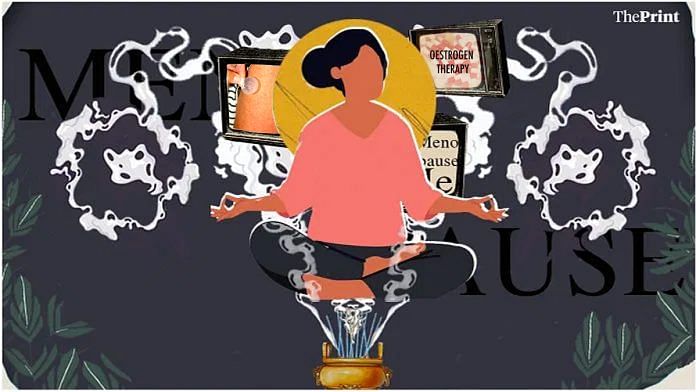The first time I saw a hot flash portrayed on screen was on Netflix’s House of Cards. In one scene, Robin Wright’s character turned to the refrigerator for relief, and I remember not understanding why. I knew what menopause was, but until then, I had never heard about the symptoms, the health implications, or what women actually go through. And that knowledge gap came from a culture that simply didn’t care enough about menopause.
Recently, the US approved a new pill for menopause symptoms and rolled back the ‘black box’ warnings that kept lakhs of women away from hormone therapy for years. The fears generated around hormone replacement therapy (HRT) were based on faulty research that has since been challenged and jettisoned.
But this long delay in the breakthrough also exposes an uncomfortable truth: Women’s midlife health has never been a priority in the healthcare industry. But the silence and shame around the topic are now ending. Finally.
The new oral pill is non-hormonal and meant to ease hot flashes and night sweats. Until recently, women had two options: antidepressants not designed for menopause, or HRT. But the fears that came with the latter were shaped by two-decades old questionable studies based on wrong samples, and limited the conversation around menopause in medical research. It kept a whole generation of women starved for care.
This new pill offers women—especially ones not suited for HRT—an easier option. The ‘black box’ warning removals may also mean regulators are willing to revisit old research on HRT. But it also prompts a question: Why did it take this long to treat something that half the world experiences?
The simple answer is patriarchy. Once a woman crosses childbearing age, she becomes less visible. Her discomfort is treated as routine. Her body stops being a priority. Women who can no longer give birth are seen as having crossed an invisible expiry date of ‘usefulness’.
Since society sees women as less important, medicine ends up following the same logic. Menopause becomes something to quietly endure, not a bodily process worth researching, funding, or understanding.
That mindset is why many women have suffered through sleepless nights, mood swings, and physical changes without proper care or interventions.
The research gap
Women’s health has also been held back by a long-standing research bias. For years, clinical trials across the world relied heavily on male participants. Women were excluded from early testing because their hormones were considered ‘too complicated’. The result: medicines were created using male data and then handed to women as if the physiological differences did not matter.
This bias delayed progress in areas that affect only women, including menopause. When you test drugs mostly on men, you get a medical system built for men. The lag in menopause treatment is part of that larger problem.
Also read: Bring odd-even back in Delhi. It has healing properties
The India conversation
India, especially the rural parts of it, doesn’t talk about menopause. Most women navigate it alone. Many don’t know what is normal, what needs attention, and what can be treated.
The new pill will need regulatory approval in India, and the price will matter when it arrives. But the approval itself can push the conversation forward. It can make women ask questions. It can force doctors to reconsider old assumptions. It can shift how menopause is seen, not just by the health industry but also by the women who go through the process.
This pill is not a cure-all. But it sends a message that women’s pain and discomfort during midlife aren’t something they must bear in silence. It challenges decades of neglect. It says that women deserve real options, not just ‘adjustments’.
Views are personal.
(Edited by Prasanna Bachchhav)







No matter how much attention is paid to women’s health, it’s always less as far as feminists are concerned. Despite having dedicated medical specialisations and super-specialisations dedicated solely to women’s health and huge amounts spent on research – it’s still nothing for people like Ms. Stela Dey.
Such people believe that that the whole point of existence of the healthcare system is to focus solely on women’s issues.